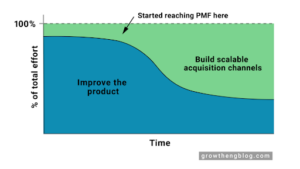Organize your data and make your work a breeze
Optimize your processes and make more accurate and efficient arrangements for your business, faster, when your data is cataloged.
With a comprehensive data catalog, you can:
- Save teams time by helping them identify and understand your data ecosystem
- Organize your data how you want — favorite tables and apply tags to your tables and transforms for quick reference
- Reduce errors and time spent troubleshooting
- Collaborate more efficiently: leave comments on data work so others can understand how your pipeline functions

Quickly navigate to the data you need
Organize your data in a way that is intuitive for your organization. Don’t waste your time trying to identify the data you need by searching through several tables. Use custom tags, like Project, Team, and Status, on data transformations and tables to identify them quickly. Help new team members get up to speed quickly via logically organized data and in-app comments so they can learn as they go.
View recent data and your favorite tables
Spend less time searching for core tables. Use our recent table view to quickly locate the tables you frequently use. Favorite tables you want to quickly reference
Document your data with table and column descriptions
Organized data makes it easier for data professionals to work efficiently. Take it a step further and help your teams and new employees quickly understand the source of your data and transformations with table and column descriptions.
Frequently asked
questions
Data cataloging refers to the process of using tags, labels, and documentation to organize and track your data. After mapping, you can use the data catalog to reference how your data ecosystem works at your organization. Simply put, cataloging allows you and your team members to locate tables and transforms faster.
Having a comprehensive data catalog can help you with data efficiency, enables you to enhance your analytics (as all of your data is organized), and reduces the risk of error as everything is where it should be.
Every expert will have different data-organizing recommendations, but the four basic steps below are among the most accepted strategies for organizing a data warehouse:
- Set up your ground rules for naming conventions and ensure that they are understandable, precise, and descriptive.
- Names should be as short as possible with a consistent format.
- Be consistent with documentation and reference version history where needed to understand data transformations
- Create and use data dictionaries for categorizing and make sure that all data tables have clearly defined functions so that everybody will be able to understand what each catalog contains.
When in doubt, remember that the best data organization practices are the ones that reflect your team’s specific needs.
Organized data enables businesses to make smarter business decisions and makes their every day operations faster and more streamlined. Your teams deserve to get their jobs done faster and easier without any holdups or misunderstandings.
Become a data maestro

Using Sigma with Mozart Data
Overview Hey there – we’re diving into an exciting walkthrough of how to integrate Sigma Computing (“Sigma”), a business

Customer Analytics for Startups
This post was written by guest author Trevor Fox. Every startup of a certain size, at a certain degree of
